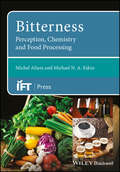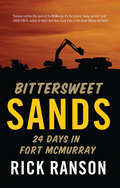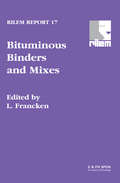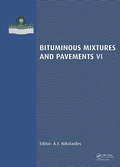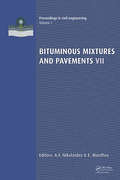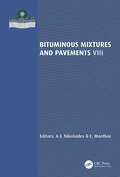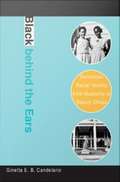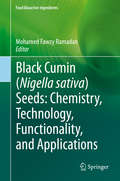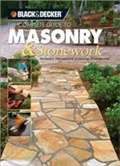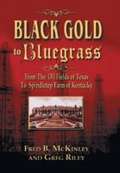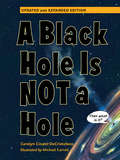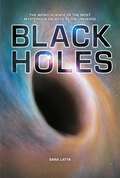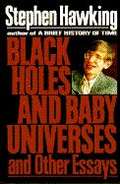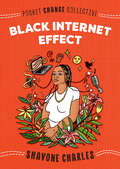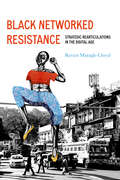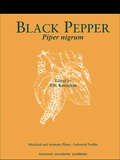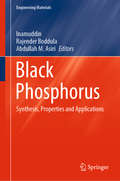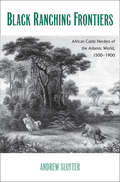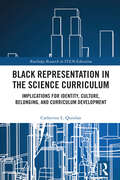- Table View
- List View
Bitterness: Perception, Chemistry and Food Processing (Institute of Food Technologists Series)
by Michel Aliani Michael N. EskinThe increasing demand for healthy foods has resulted in the food industry developing functional foods with health-promoting and/or disease preventing properties. However, many of these products bring new challenges. While drugs are taken for their efficacy, functional foods need to have tastes that are acceptable to consumers. Bitterness associated with the functional foods is one of the major challenges encountered by food industry today and will remain so in years to come. This important book offers a thorough understanding of bitterness, the food ingredients that cause it and its accurate measurement. The authors provide a thorough review of bitterness that includes an understanding of the genetics of bitterness perception and the molecular basis for individual differences in bitterness perception. This is followed by a detailed review of the chemical structure of bitter compounds in foods where bitterness may be considered to be a positive or negative attribute. To better understand bitterness in foods, separation and analytical techniques used to identify and characterize bitter compounds are also covered. Food processing can itself generate compounds that are bitter, such as the Maillard reaction and lipid oxidation related products. Since bitterness is considered a negative attribute in many foods, the methods being used to remove and/mask it are also thoroughly discussed.
Bittersweet Sands: Twenty-Four Days in Fort McMurray
by Rick RansonRick Ranson has collected stories from all over North America, from the DEW Line and the drill ships of Working North to the raging waters of the Mississippi in Paddling South. Now, join this engaging raconteur as he ventures to one of Canada’s most talked-about locations: Fort McMurray, home of the oilsands. In Bittersweet Sands, Rick Ranson recounts a twenty-four day shift at an oilsands operation undergoing a shutdown, giving us a glimpse at a world most of us only know from the evening news. Along the way, he encounters a group of engaging roughnecks, including a husband and wife welding crew, a petty fascist safety inspector, and the tough-as-nails secretary that keeps them all in line.
Bituminous Binders and Mixes
by L. FranckenThe aim of the studies presented in this report is the implementation of rational concepts and testing procedures for the design and manufacture of bituminous materials for applications in pavement construction. Practical test procedures are recommended for binder evaluation, mix design and performance assessment of bituminous materials. The three
Bituminous Mixtures and Pavements VI
by Kambiz VafaiBituminous Mixtures and Pavements contains 113 accepted papers from the 6th International ConferenceBituminous Mixtures and Pavements (6th ICONFBMP, Thessaloniki, Greece, 10-12 June 2015). The 6th ICONFBMP is organized every four years by the Highway Engineering Laboratory of the Aristotle University of Thessaloniki, Greece, in conjunction with
Bituminous Mixtures and Pavements VII: Proceedings of the 7th International Conference 'Bituminous Mixtures and Pavements' (7ICONFBMP), June 12-14, 2019, Thessaloniki, Greece
by A. F. Nikolaides E. ManthosHighway engineers are facing the challenge not only to design and construct sustainable and safe pavements properly and economically. This implies a thorough understanding of materials behaviour, their appropriate use in the continuously changing environment, and implementation of constantly improved technologies and methodologies. Bituminous Mixtures and Pavements VII contains more than 100 contributions that were presented at the 7th International Conference ‘Bituminous Mixtures and Pavements’ (7ICONFBMP, Thessaloniki, Greece 12-14 June 2019). The papers cover a wide range of topics:- Bituminous binders- Aggregates, unbound layers and subgrade- Bituminous mixtures (Hot, Warm and Cold)- Pavements (Design, Construction, Maintenance, Sustainability, Energy and environment consideration)- Pavement management- Pavement recycling- Geosynthetics- Pavement assessment, surface characteristics and safety- PostersBituminous Mixtures and Pavements VII reflects recent advances in highway materials technology and pavement engineering, and will be of interest to academics and professionals interested or involved in these areas.
Bituminous Mixtures and Pavements VIII
by A. F. Nikolaides E. ManthosBituminous Mixtures and Pavements VIII contains 114 papers as presented at the 8th International Conference ‘Bituminous Mixtures and Pavements’ (8th ICONFBMP, 12-14 June 2024, Thessaloniki, Greece). The contributions reflect the research and practical experience of academics and practicing engineers from thirty-four (34) different countries, and cover a wide range of topics:Session I: Bitumen, Modified binders, Aggregates, and SubgradeSession II: Bituminous mixtures (Design, Construction, Testing, Performance)Session III: Pavements (Design, Construction, Maintenance, Sustainability, Energy and Environmental consideration)Session IV: Pavement management and GeosyntheticsSession V: Pavement recyclingSession VI: Pavement surface characteristics, Pavement performance monitoring, SafetySession VII: Biomaterials in pavement engineeringSession VIII: Prediction models of pavement performanceBituminous Mixtures and Pavements VIII covers recent advances in highway materials technology and pavement engineering, and will be of interest to scientists and professionals involved or interested in these areas.The ICONFBMP-conferences have been organized every four years since 1992. This 8th conference was jointly organized by: Laboratory of Highway Engineering, Aristotle University of Thessaloniki, Greece; Built Environment Research Institute (BERI), University of Ulster, UK; University of Texas San Antonio (UTSA), USA; Laboratory for Advanced Construction Technology (LACT), Technological Institute of Iowa, USA; Technological University of Delft (TUDelft), The Netherlands, and University of Antwerp, (UA), Belgium.
Bitwise: A Life in Code
by David AuerbachAn exhilarating, elegant memoir and a significant polemic on how computers and algorithms shape our understanding of the world and of who we are Bitwise is a wondrous ode to the computer languages and codes that captured technologist David Auerbach’s imagination. With a philosopher’s sense of inquiry, Auerbach recounts his childhood spent drawing ferns with the programming language Logo on the Apple IIe, his adventures in early text-based video games, his education as an engineer, and his contributions to instant messaging technology developed for Microsoft and the servers powering Google’s data stores. A lifelong student of the systems that shape our lives—from the psychiatric taxonomy of the Diagnostic and Statistical Manual to how Facebook tracks and profiles its users—Auerbach reflects on how he has experienced the algorithms that taxonomize human speech, knowledge, and behavior and that compel us to do the same. Into this exquisitely crafted, wide-ranging memoir of a life spent with code, Auerbach has woven an eye-opening and searing examination of the inescapable ways in which algorithms have both standardized and coarsened our lives. As we engineer ever more intricate technology to translate our experiences and narrow the gap that divides us from the machine, Auerbach argues, we willingly erase our nuances and our idiosyncrasies—precisely the things that make us human.
Black Behind the Ears: Dominican Racial Identity from Museums to Beauty Shops
by Ginetta E. B. CandelarioBlack behind the Ears is an innovative historical and ethnographic examination of Dominican identity formation in the Dominican Republic and the United States. For much of the Dominican Republic's history, the national body has been defined as "not black," even as black ancestry has been grudgingly acknowledged. Rejecting simplistic explanations, Ginetta E. B. Candelario suggests that it is not a desire for whiteness that guides Dominican identity discourses and displays. Instead, it is an ideal norm of what it means to be both indigenous to the Republic (indios) and "Hispanic. " Both indigeneity and Hispanicity have operated as vehicles for asserting Dominican sovereignty in the context of the historically triangulated dynamics of Spanish colonialism, Haitian unification efforts, and U. S. imperialism. Candelario shows how the legacy of that history is manifest in contemporary Dominican identity discourses and displays, whether in the national historiography, the national museum's exhibits, or ideas about women's beauty. Dominican beauty culture is crucial to efforts to identify as "indios" because, as an easily altered bodily feature, hair texture trumps skin color, facial features, and ancestry in defining Dominicans as indios. Candelario draws on her participant observation in a Dominican beauty shop in Washington Heights, a New York City neighborhood with the oldest and largest Dominican community outside the Republic, and on interviews with Dominicans in New York City, Washington, D. C. , and Santo Domingo. She also analyzes museum archives and displays in the Museo del Hombre Dominicano and the Smithsonian Institution as well as nineteenth- and early-twentieth-century European and American travel narratives.
Black cumin (Food Bioactive Ingredients)
by Mohamed Fawzy RamadanRecent developments in the field of nutrition have led to increased interest in herbs and medicinal plants as phytochemical-rich sources for functional food, nutraceuticals, and drugs. As research sheds light on the therapeutic potential of various bioactive phytochemicals, the demand for plant extracts and oils has increased. Black cumin or black seeds (Nigella sativa) have particularly widespread nutritional and medicinal applications. In traditional medicine, black seeds are used to manage fatigue and chronic headache. Black seed oil is used as an antiseptic and analgesic remedy and for treatment of joint's pain and stiffness and can be mixed with sesame oil to treat dermatosis, abdominal disorders, cough, headache, fever, liver ailments, jaundice, sore eyes, and hemorrhoids. Thymoquinone, the main constituent in black seed volatile oil, has been shown to suppress carcinogenesis. Black cumin (Nigella sativa) seeds: Chemistry, Technology, Functionality, and Applications presents in detail the chemical composition, therapeutic properties, and functionality of high-value oils, phytochemicals, nutrients, and volatiles of the Nigella sativa seed. Organized by formulation (seeds, fixed oil, essential oil, and extracts), chapters break this seed down into its chemical constituents and explore their role in the development of pharmaceuticals, nutraceuticals, novel food, natural drugs, and feed. Following numerous reports on the health-promoting activities of Nigella sativa, this is the first comprehensive presentation of the functional, nutritional, and pharmacological traits of Nigella sativa seeds and seed oil constituents.
Black & Decker: The Complete Guide to Masonry and Stonework
by Creative Publishing InternationalFeatures all new, state-of-the-art information on decorative concrete finishes, including acid coloring, stamping, and using cementitious paints. Another new section shows easy methods for casting concrete in forms to create countertops, garden benches, and other accessories.
Black & Decker: The Complete Guide to Plumbing (Expanded 4th Edition)
by Creative Publishing InternationalEverything you need to know about plumbing. More complete than ever, this edition includes new material and revised information and is completely current with the 2006 Universal Plumbing Code. From basic repairs to advanced renovations, this is the only plumbing reference book a homeowner needs. And now, for the first time, The Complete Guide to Plumbing includes a comprehensive section on working with gas pipe. No other big book of plumbing for DIYers covers this important subject. Also new to this 4th edition is expansive coverage of PEX (cross-linked polyethylene), the bendable supply tubing that's taking over a major portion of the DIY market. And with the current popularity of outdoor kitchens, we've expanded our coverage of outdoor plumbing as well. Now, we'll show you every step of the process to supply and drain an outdoor sink.
The Black Flies of Subtropical and Tropical Asia: Taxonomy and Biology
by Hiroyuki TakaokaThis book uncovers the entire picture of the black fly (Diptera: Simuliidae) fauna in subtropical and tropical Asia (the Oriental Region). Increased discoveries of new species of black flies in the Oriental Region have disclosed a remarkable diversity in terms of phylogenetic lineages and morphological features, particularly adult genitalia and pupal gills. The black fly fauna in the Oriental Region is found to be completely different from those in other regions. The book has two aims, academic and practical. Introduction provides the general information on the biology and effects on human and animal health and welfare of black flies and introduces the unique characteristics of the black fly fauna in this region. Part I proposes a classification scheme for all 671 named and 45 unnamed species of Oriental black flies, which are placed 11 subgenera and 36 species-groups of the genus Simulium. In Part II, synoptic accounts are given for their distribution, bionomics, and taxonomic comments of all the species. In Part III, the faunas of black flies in 15 countries or areas [India, Nepal, Bhutan, Sri Lanka, Myanmar, Thailand, Peninsular Malaysia, Borneo, Sunda Archipelago (Sumatra, Java, Bali, Lombok, Sumbawa, Flores and Timor), East Indonesia (Sulawesi, Maluku Islands and Irian Jaya), Vietnam, Philippines, Taiwan, South China, Nansei Islands (Japan)], are overviewed, and species lists and identification keys for females, males, pupae and larvae, are constructed. Ninety-eight figures of 1,691 line-drawings highlight various unique morphological characteristics of most subgenera and species-groups. Parts I and II are academically essential for medical or biological scientists and students to study black flies. Keys to identify species in 15 countries or areas in Part III are of practical use for health workers for the control of insects of medical and veterinary importance, as well as for ecologists for the study of aquatic invertebrates. Many novel morphological characteristics illustrated in the figures appeal to readers and show the importance of biodiversity of natural terrestrial ecosystems. Contents of this book resulted from the author’s taxonomic review of all 716 Oriental species of black flies, with reference to 481 publications.
Black Gold to Bluegrass: From Oil Fields of Texas to Spindletop Farm of Kentucky
by Fred B. Mckinley Greg RileyBlack Gold to Bluegrass is the first such work that concentrates wholly on the Second Spindletop Oil Boom and what happened afterward--taking the story from the oil fields of Southeast Texas and Louisiana to the Bluegrass of Kentucky. After partnering with Thomas Peter Lee of Houston, Frank Yount, water-well driller turned wildcatter, struck it rich, and the Yount-Lee Oil Company began a remarkable march that almost took it to the top of the oil industry. Although he used some of his wealth to benefit his fellowman, Frank Yount, also put together a priceless collection of antique violins, and some of the classiest and most expensive automobiles of the day, including three Duesenbergs and a Cord. He built a state-of-the-art Saddlebred training facility in Beaumont, hired dashing horseman Cape Grant to run it, and directed him to take the horses of Spindletop Stables to competitive shows throughout the county--and win! Frank Yount died young at age 53 in November 1933. Within two years, Pansy--his wife and principal heir--and the investors in the Yount-Lee Oil Company sold the enterprise to Houston attorney Wright Morrow for then what amounted to the third-largest financial transaction in American business history. Morrow, who later became one of the giants of Texas politics, immediately parceled off most of Yount-Lee's oil assets to Stanolind (Standard Oil of Indiana), a subsidiary of the giant Standard Oil conglomerate which later became Amoco. In spite of the magnitude of this transaction, when expressed in Depression era dollars, it was later widely acknowledged that no one, save perhaps Frank Yount himself, fully understood the astronomical significance and value of the Yount-Lee holdings. Pansy, no less independent and colorful than her husband (but somewhat more flamboyant) took her part of the family's fortune and moved Spindletop Stables to a 1,066 acre show farm in the horse country of Kentucky, building a 45,000 square foot mansion which she named Spindletop Hall, the centerpiece of the new and extremely successful Spindletop Farm. The farm became the most innovative saddle horse breeding facility of its time, and Pansy became a legend in horse circles. Using an array of previously unknown primary source materials from the Yount-Manion family archives, photographs never before published, and recently discovered film, McKinley and Riley present a book filled with incredible acts of generosity, long-standing controversies, intrigues, and twists and turns at every point. Black Gold to Bluegrass is a must for general readers and scholars alike, whose interests lie in Saddlebreds, antique automobiles, or violins; and for oil enthusiasts, the book paints a rags-to-riches story of a true wildcatter turned contemporary hero who embodies the American dream.
Black Hole Chasers: The Amazing True Story of an Astronomical Breakthrough
by Anna Crowley ReddingIn Black Hole Chasers, award-winning investigative journalist Anna Crowley Redding presents the riveting true story of one of the most inspiring scientific breakthroughs of our lifetime—the Event Horizon Telescope team's reveal of the first image of a super massive black hole.In April 2019, the Event Horizon Telescope Team unveiled the first ever image of a super massive black hole.This inspiring scientific breakthrough took years of hard work, innovative thinking, and a level of global cooperation never seen before. The challenge was immense. The goal was impossible. They would need a telescope as big as the earth itself. The technology simply didn’t exist. And yet, a multi-national team of scientists was able to show the world an image of something previously unseeable.Based off extensive research and hours interviews with many of the team's ground-breaking scientist, physicists, and mathematicians, Black Hole Chasers is a story of unique technological innovation and scientific breakthroughs, but more importantly, it's a story of human curiosity and triumph.
A Black Hole is Not a Hole: Updated Edition
by Carolyn Cinami DeCristofanoA black hole isn't really a hole . . . is it? Get ready to S-T-R-E-T-C-H your mind with this beloved and best-selling science book. Updated with an all-new chapter about the first black-hole image ever!What are black holes, what causes them, and how the heck did scientists discover them? Acclaimed STEM writer Carolyn DeCristofano's playful text shares how astronomers find black holes, introduces our nearest black-hole neighbors, and provides an excellent introduction to an extremely complex scientific topic. Gorgeous space paintings supplement real telescopic images, and funny doodles and speech bubbles keep the content light and fun.
Black Holes: The Weird Science of the Most Mysterious Objects in the Universe
by Sara LattaIn 2015 two powerful telescopes detected something physicists had been seeking for more than one hundred years—gravitational waves from the collision of two black holes. This announcement thrilled the scientific community. Since the eighteenth century, astronomers have predicted the existence of massive, invisible stars whose gravity would not let anything—even light—escape. In the twenty-first century, sophisticated technologies are bringing us closer to seeing black holes in action. Meet the scientists who first thought of black holes hundreds of years ago, and learn about contemporary astrophysicists whose work is radically shaping how we understand black holes, our universe, and how it originated.
Black Holes and Baby Universes
by Stephen HawkingThese thirteen essays and an extended BBC interview range from the autobiographical to the purely scientific. Hawking discusses imaginary time, black holes, and the Grand Unified Theory.
Black Internet Effect (Pocket Change Collective)
by Shavone Charles"This frank, spirited guide spotlights a thoughtful leader who embraces social responsibility." — KirkusWith witty humor and a strong sense of self, musician, model, and technology executive Shavone Charles recounts her journey through Google, Twitter, and more – and outlines her mission to make space for herself and other young women of color both online and IRL.Pocket Change Collective was born out of a need for space. Space to think. Space to connect. Space to be yourself. And this is your invitation to join us. This is a series of small books with big ideas from today's leading activists and artists. "The right balance of curiosity and good old nerve has always pushed me toward good directions in my life. During the darkest, most discouraging times, I can lean on those two parts of me." In this installment of the Pocket Change Collective, musician and technology phenom Shavone Charles explores how curiosity and nerve led her from a small college in Merced, California, to some of the most influential spaces in the tech world: from Google to Twitter to eventually landing a spot on the coveted Forbes 30 Under 30 list. Grateful for being the first in many spaces, but passionate about being neither the last nor the only, Charles tells her story in the hopes of guiding others and shaping a future where people, particularly women of color, feel empowered to make space for themselves and challenge society&’s status quos.
Black Networked Resistance: Strategic Rearticulations in the Digital Age
by Raven Simone Maragh-LloydBlack Networked Resistance explores the creative range of Black digital users and their responses to varying forms of oppression, utilizing cultural, communicative, political, and technological threads both on and offline. Raven Maragh-Lloyd demonstrates how Black users strategically rearticulate their responses to oppression in ways that highlight Black publics’ historically rich traditions and reveal the shifting nature of both dominance and resistance, particularly in the digital age. Through case studies and interviews, Maragh-Lloyd reveals the malleable ways resistance can take shape and the ways Black users artfully demonstrate such modifications of resistance through strategies of survival, reprieve, and community online. Each chapter grounds itself in a resistance strategy, such as Black humor, care, or archiving, to show the ways that Black publics reshape strategies of resistance over time and across media platforms. Linking singular digital resistance movements while arguing for Black publics as strategic content creators who connect resistance strategies from our past to suit our present needs, Black Networked Resistance encourages readers to create and cultivate lasting communities necessary for social and political change by imagining a future of joy, community, and agency through their digital media practices.
Black Pepper: Piper nigrum (ISSN #Vol. 13)
by P. N. RavindranBlack Pepper is the first monograph on this important and most widely used spice. This volume includes chapters on all aspects of the crops' botany; crop improvement, agronomy, chemistry, post-harvest technology, processing, diseases, insect pests, marketing, economy and uses. All the available information has been collected and presented by expert
Black Phosphorus: Synthesis, Properties and Applications (Engineering Materials)
by Inamuddin Abdullah M. Asiri Rajender BoddulaThis book exhibits novel semiconductor black phosphorous (BP) materials that are developed beyond other 2D materials (graphene and TMDs). It accurately reviews their manufacture strategies, properties, characterization techniques and different utilizations of BP-based materials. It clarifies all perspectives alongside down to earth applications which present a future direction in the biomedical, photo, environmental, energy, and other related fields. Hence, the sections accentuate the basic fundamentals, synthesis, properties, applications, state-of-the-art studies about the BP-based materials through detailed reviews. This book is the result of commitments by numerous experts in the field from various backgrounds and expertise. It will appeal to researchers, scientists and in addition understudies from various teaches, for example, semiconductor innovation, energy and environmental science. The book content incorporates industrial applications and fills the gap between the exploration works in the lab and viable applications in related ventures.
Black Power TV
by Devorah HeitnerIn Black Power TV, Devorah Heitner chronicles the emergence of Black public affairs television starting in 1968. She examines two local shows, New York's Inside Bedford-Stuyvesant and Boston's Say Brother, and the national programs Soul! and Black Journal. These shows offered viewers radical and innovative programming: the introspections of a Black police officer in Harlem, African American high school students discussing visionary alternatives to the curriculum, and Miriam Makeba comparing race relations in the United States to apartheid in South Africa. While Inside Bedford-Stuyvesant and Say Brother originated from a desire to contain Black discontent during a period of urban uprisings and racial conflict, these shows were re-envisioned by their African American producers as venues for expressing Black critiques of mainstream discourse, disseminating Black culture, and modeling Black empowerment. At the national level, Soul! and Black Journal allowed for the imagining of a Black nation and a distinctly African American consciousness, and they played an influential role in the rise of the Black Arts Movement. Black Power TV reveals how regulatory, activist, and textual histories are interconnected and how Black public affairs television redefined African American representations in ways that continue to reverberate today.
Black Ranching Frontiers
by Andrew SluyterIn this groundbreaking book Andrew Sluyter demonstrates for the first time that Africans played significant creative roles in establishing open-range cattle ranching in the Americas. In so doing, he provides a new way of looking at and studying the history of land, labor, property, and commerce in the Atlantic world. Sluyter shows that Africans’ ideas and creativity helped to establish a production system so fundamental to the environmental and social relations of the American colonies that the consequences persist to the present. He examines various methods of cattle production, compares these methods to those used in Europe and the Americas, and traces the networks of actors that linked that Atlantic world. The use of archival documents, material culture items, and ecological relationships between landscape elements make this book a methodologically and substantively original contribution to Atlantic, African-American, and agricultural history.
Black Representation in the Science Curriculum: Implications for Identity, Culture, Belonging, and Curriculum Development (Routledge Research in STEM Education)
by Catherine L. QuinlanThis book sheds new light on the importance of Black representation in the US science curriculum from a social, cultural, cognitive, and scientific perspective.Weaving together content, new methodologies, and science education pedagogies, it opens up new space for the meaningful inclusion of the science capital and cultural capital of Black people in the US science curricula. Drawing on ethnographic interviews with African American Gullah-Geechee and research outcomes from qualitative and quantitative research and curriculum development, it brings home the importance of attending to a sense of belonging in the K-12 science curricula toward lasting equity and inclusion. The author uses applied cognitive psychology theories as frameworks to show how perceptions about the perceived value of Black representation as a way of knowing is influenced by identity, culture, and social schemas.Incorporating new methodologies and approaches focused on inclusion and belonging, it will appeal to scholars, researchers, upper-level and post-graduate students with interest in STEM education, race and ethnicity in education, equity, and research methods in education.
Black Rice: The African Origins Of Rice Cultivation In The Americas
by Judith A. CarneyFew Americans identify slavery with the cultivation of rice, yet rice was a major plantation crop during the first three centuries of settlement in the Americas. Rice accompanied African slaves across the Middle Passage throughout the New World to Brazil, the Caribbean, and the southern United States. By the middle of the eighteenth century, rice plantations in South Carolina and the black slaves who worked them had created one of the most profitable economies in the world. Black Rice tells the story of the true provenance of rice in the Americas. It establishes, through agricultural and historical evidence, the vital significance of rice in West African society for a millennium before Europeans arrived and the slave trade began. The standard belief that Europeans introduced rice to West Africa and then brought the knowledge of its cultivation to the Americas is a fundamental fallacy, one which succeeds in effacing the origins of the crop and the role of Africans and African-American slaves in transferring the seed, the cultivation skills, and the cultural practices necessary for establishing it in the New World. In this vivid interpretation of rice and slaves in the Atlantic world, Judith Carney reveals how racism has shaped our historical memory and neglected this critical African contribution to the making of the Americas.
